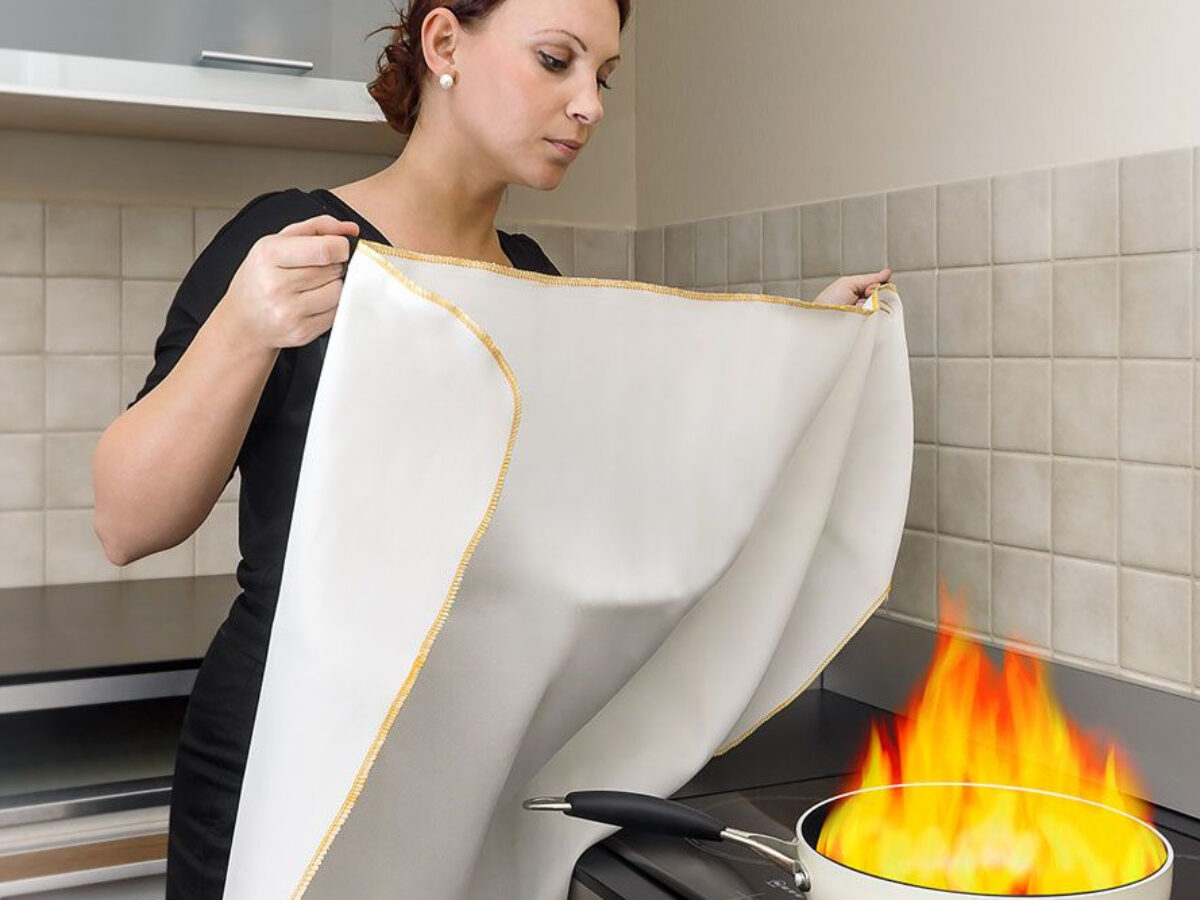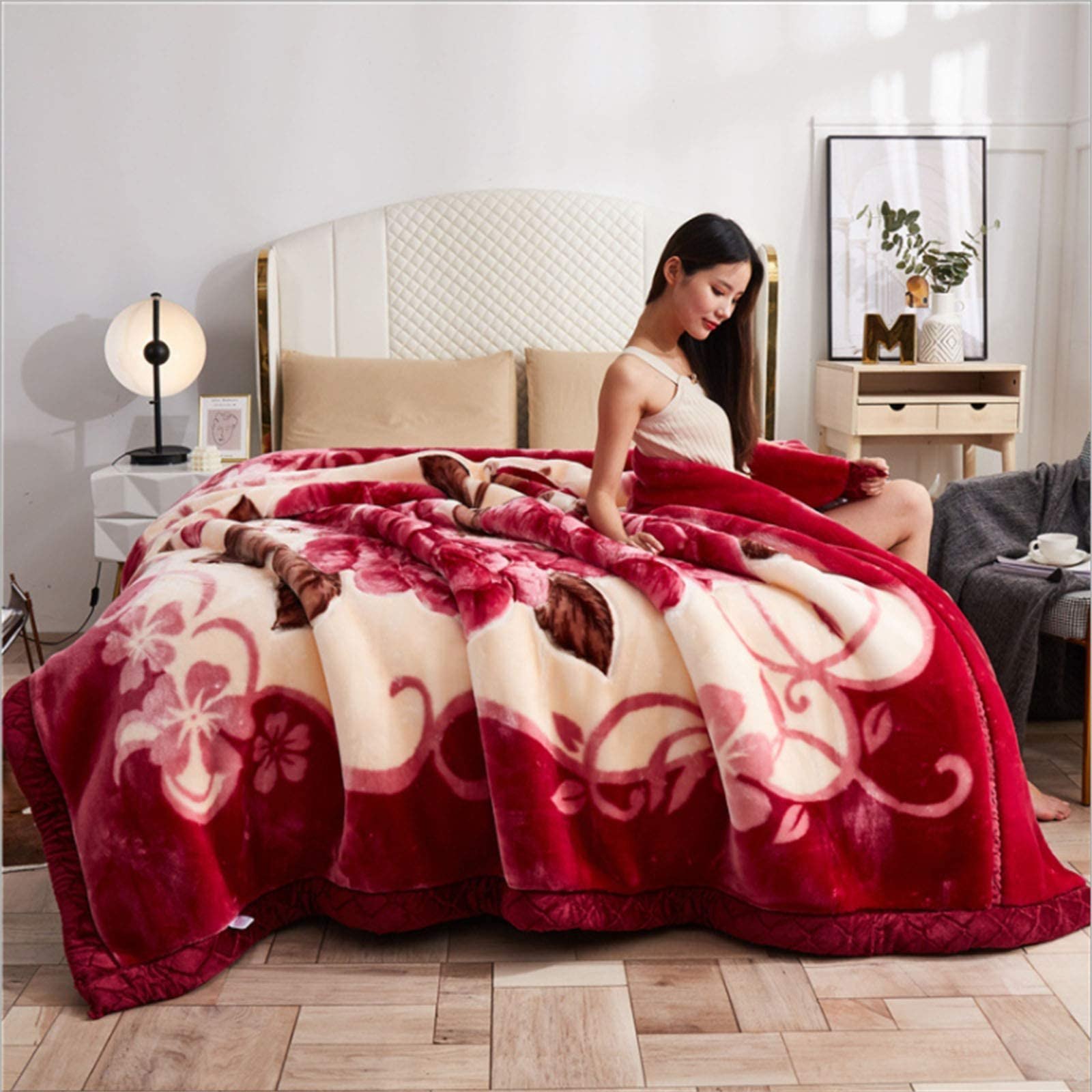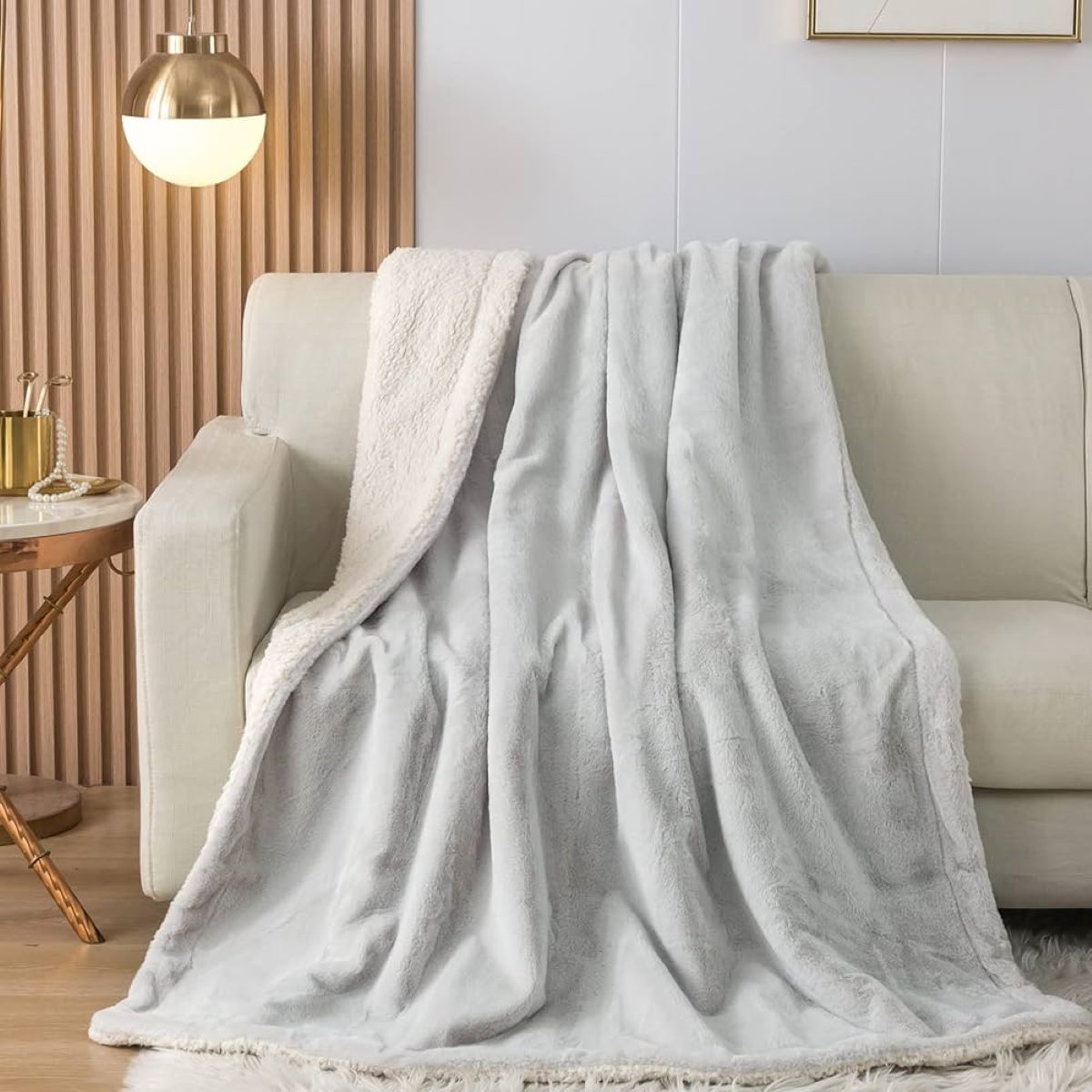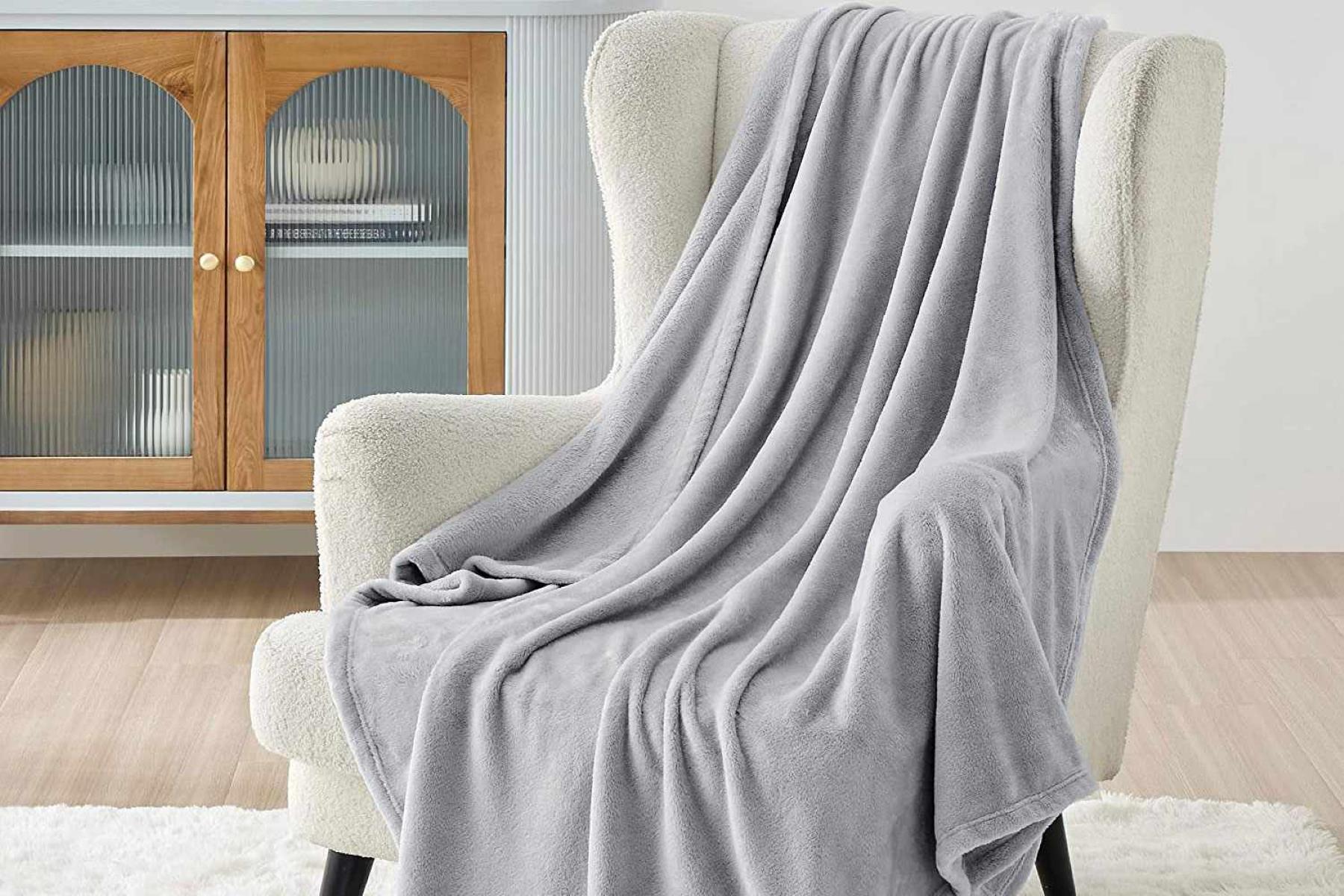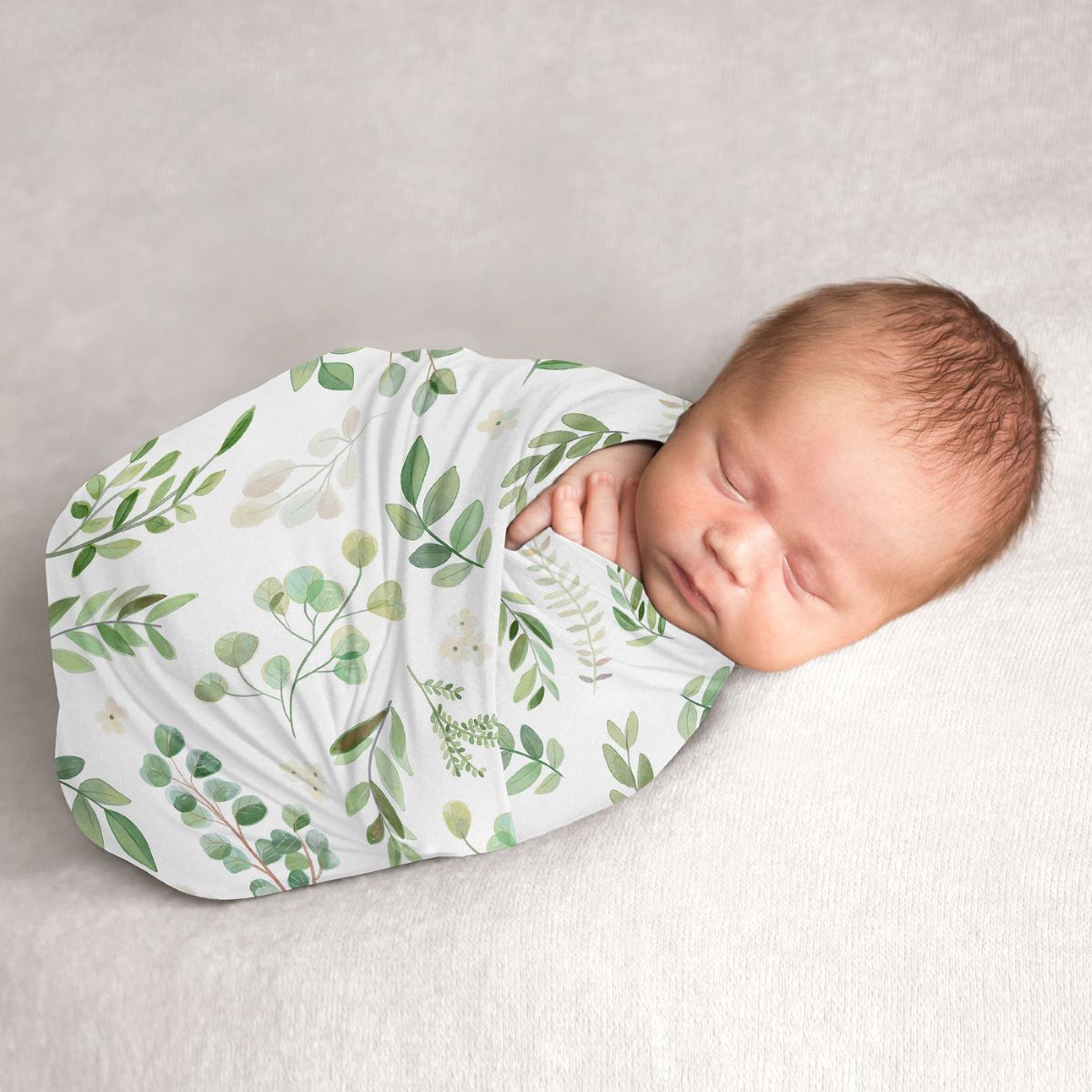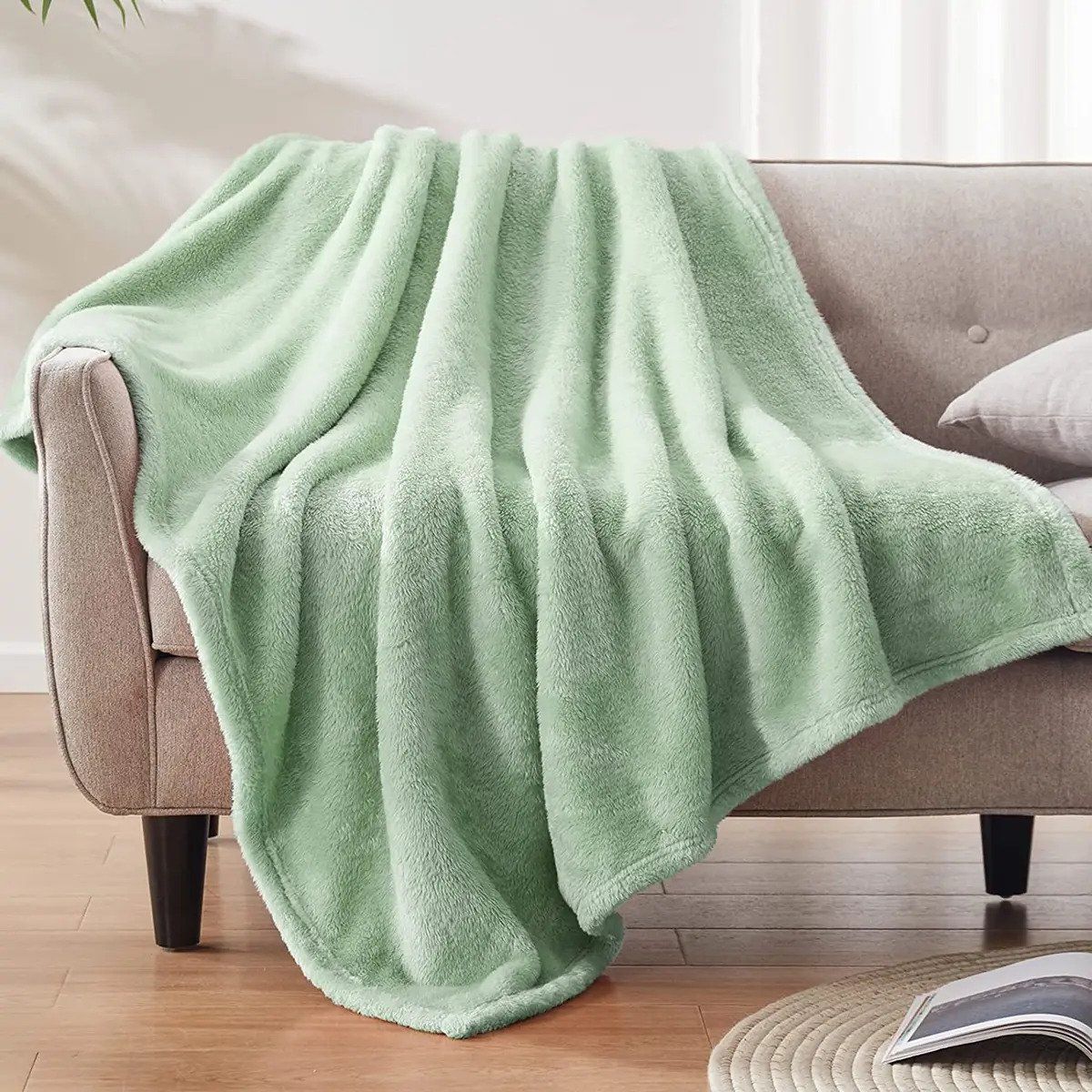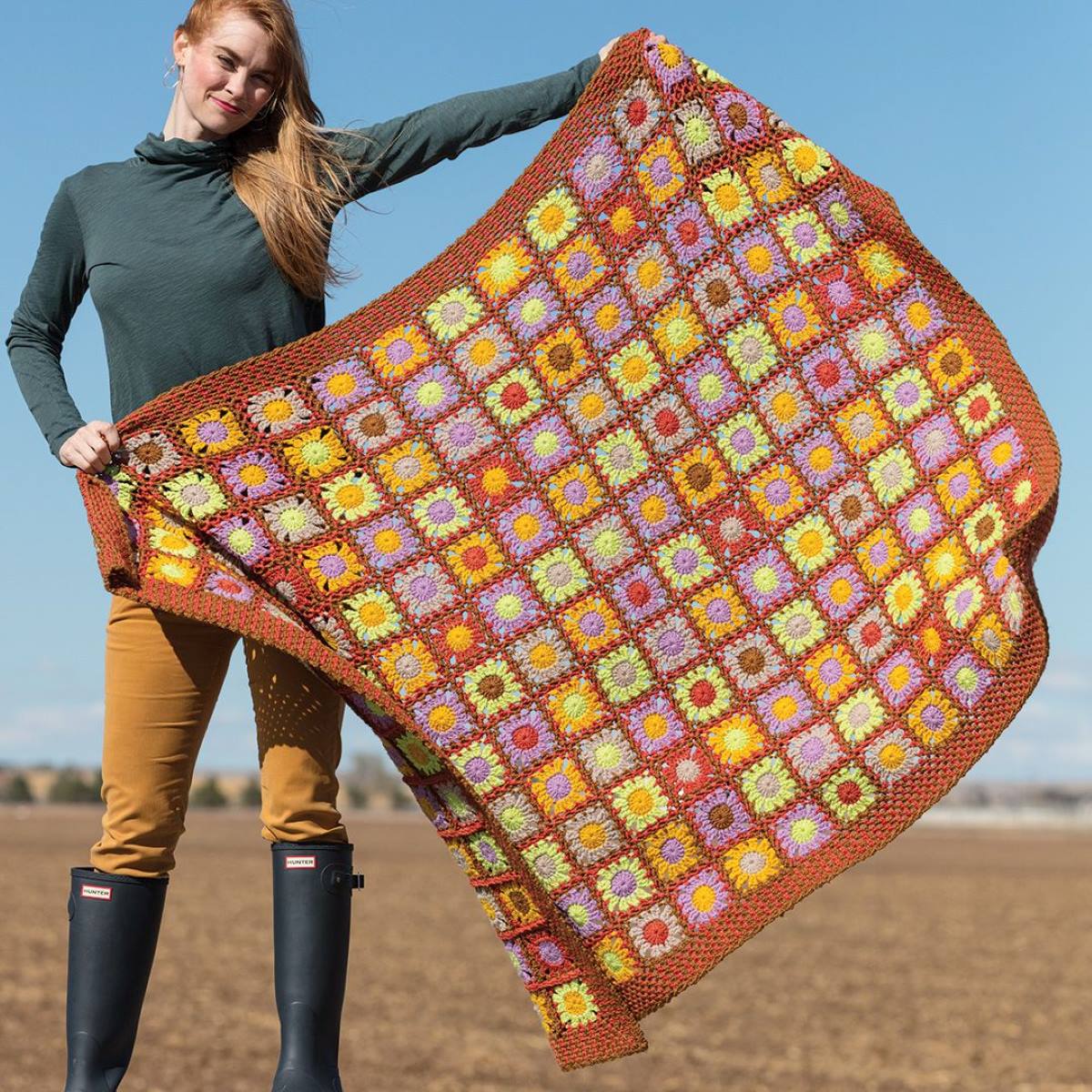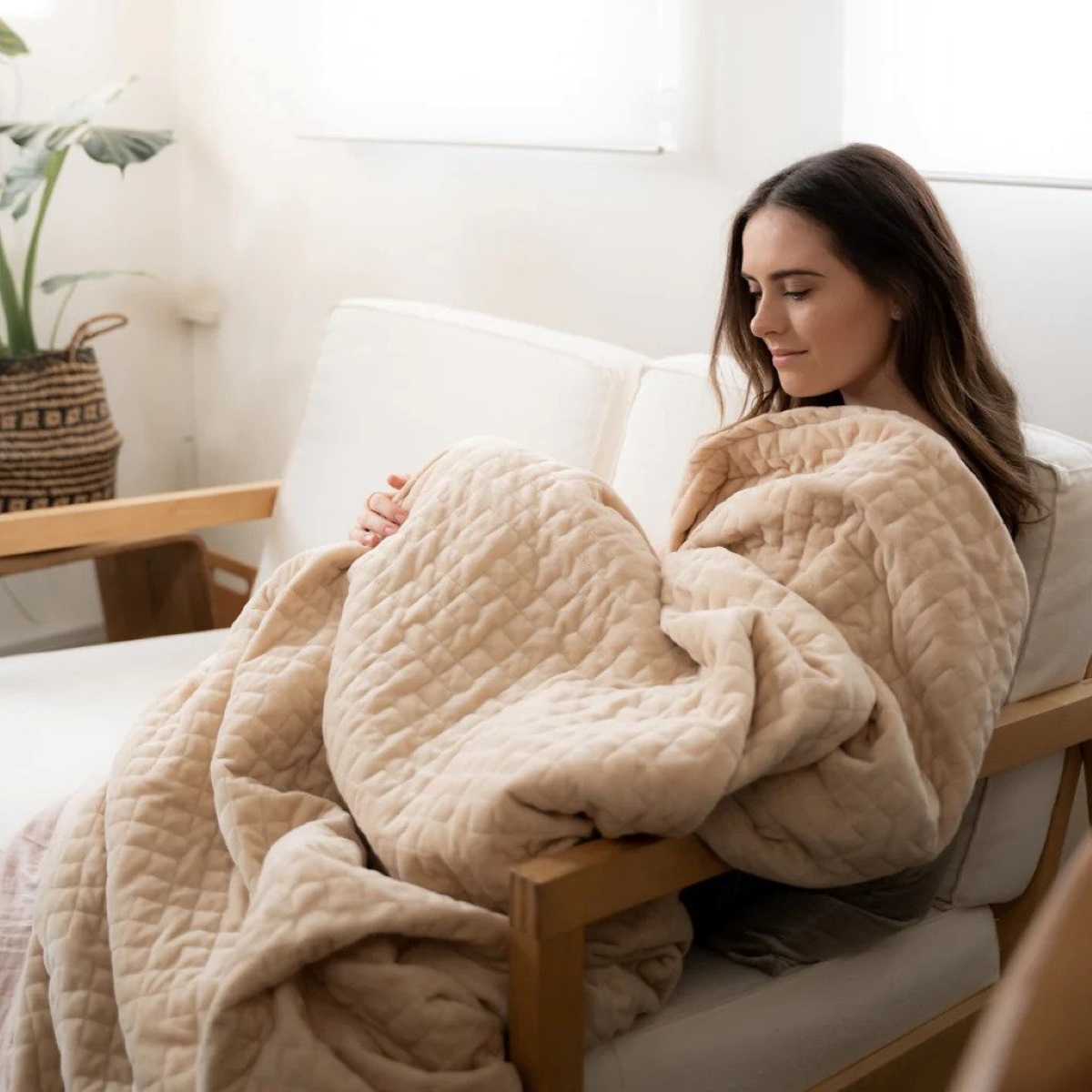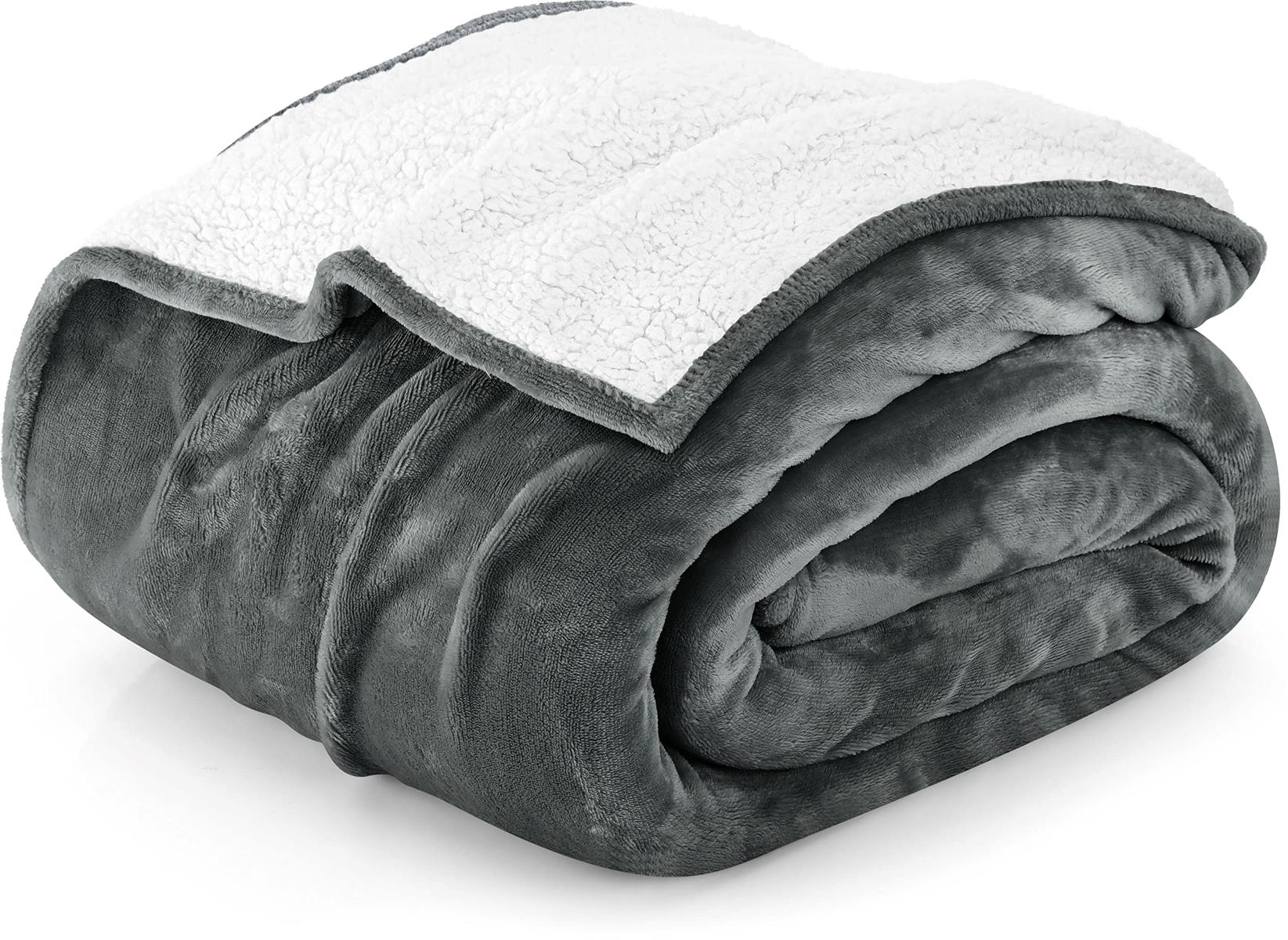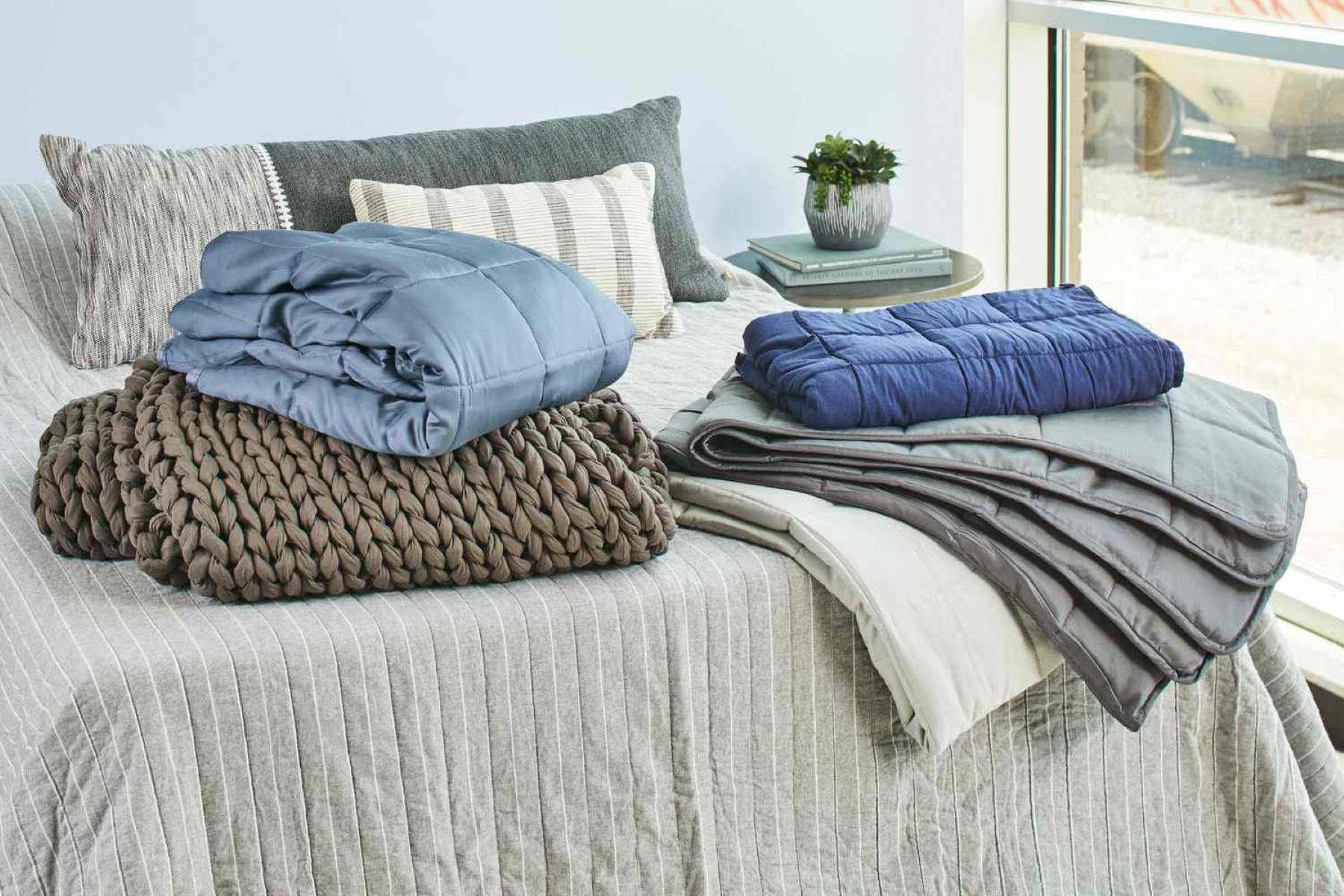

Articles
What Is The Warmest Type Of Blanket
Modified: October 20, 2024
Discover the warmest type of blanket with our informative articles. Stay cozy and comfortable all year round.
(Many of the links in this article redirect to a specific reviewed product. Your purchase of these products through affiliate links helps to generate commission for Storables.com, at no extra cost. Learn more)
Introduction
When it comes to staying warm and cozy, there’s nothing quite like snuggling up with a soft and comfortable blanket. A warm blanket not only provides physical comfort, but it also has a way of soothing the soul and creating a sense of security. Whether you’re lounging on the couch, curling up in bed, or enjoying a chilly evening outdoors, a warm blanket can be your faithful companion to ward off the cold.
But with so many different types of blankets available on the market, it can be overwhelming to choose the warmest one that suits your needs. From fleece to down to wool, each material offers unique qualities and levels of warmth. In this article, we will explore the benefits of using a warm blanket, discuss the different types of blankets, and ultimately reveal the warmest type of blanket that will keep you toasty on even the coldest of nights.
When it comes to choosing a warm blanket, there are several factors to consider. Not only do you want a blanket that offers optimal warmth, but you also want it to be durable, easy to care for, and aesthetically pleasing. By understanding the criteria for measuring warmth in blankets and comparing the different types based on their warmth levels, you’ll be able to make an informed decision on which blanket will keep you cozy all winter long.
So, if you’re ready to dive into the world of warm blankets and uncover the secret to ultimate comfort, let’s get started!
Key Takeaways:
- The warmest type of blanket is [Name of the Blanket Type], known for its exceptional insulation and cozy comfort, making it ideal for even the coldest nights.
- Consider factors such as material, warmth rating, size, care instructions, allergies, style, and budget when choosing the perfect warm blanket for your needs.
Read more: What Is The Best Type Of Blanket
Benefits of Using a Warm Blanket
Using a warm blanket offers numerous benefits beyond simply keeping you cozy. Let’s explore some of the advantages of snuggling up with a warm blanket:
- Comfort and relaxation: A warm blanket provides a sense of comfort and relaxation. Wrapping yourself in a soft, warm blanket can help reduce stress, promote better sleep, and create a cozy atmosphere in your home.
- Improved sleep quality: A warm blanket can help regulate body temperature, which is essential for a good night’s sleep. By keeping you warm and snug, a blanket helps prevent disruptions in your sleep caused by feeling too cold.
- Enhanced circulation: The warmth provided by a blanket can promote better blood circulation. This is especially beneficial for individuals with poor circulation or those who suffer from conditions like arthritis, as it helps relax muscles and alleviate discomfort.
- Protection from the cold: During colder seasons, a warm blanket acts as a barrier between you and the chilly air, helping to keep you warm and prevent heat loss. This can be particularly important for young children, the elderly, or anyone who may be more susceptible to the cold.
- Adds a touch of luxury: Investing in a high-quality warm blanket can add a touch of luxury and style to your living space. Whether it’s a plush faux fur blanket in the living room or a cozy cable-knit throw in the bedroom, a warm blanket can elevate the aesthetic appeal of any room.
- Versatility: A warm blanket is not limited to indoor use. It can also be a great companion for outdoor activities like camping, picnics, or simply enjoying a bonfire on a cool evening. Having a portable warm blanket allows you to stay comfortable and enjoy the outdoors in any weather.
- Energy savings: By using a warm blanket, you can reduce your reliance on heating systems, leading to energy savings and lower utility bills. Turning down the thermostat and relying on a warm blanket can be an energy-efficient way to stay warm and cozy.
As you can see, the benefits of using a warm blanket go far beyond mere comfort. From improved sleep to better circulation and energy savings, a warm blanket is a valuable investment in your overall well-being and can enhance your quality of life.
Different Types of Blankets
When it comes to selecting a warm blanket, there are several different types to choose from. Let’s explore some of the most popular options:
- Fleece Blankets: Fleece blankets are made from synthetic materials that mimic the softness and warmth of natural wool. They are lightweight, breathable, and excellent at retaining heat. Fleece blankets are easy to care for and come in a variety of colors and patterns, making them a popular choice for both adults and children.
- Wool Blankets: Wool blankets are known for their exceptional warmth and insulation properties. They are naturally moisture-wicking, meaning they can keep you warm even when damp. Wool blankets are often chosen for their durability and longevity but can require special care in cleaning.
- Cotton Blankets: Cotton blankets are lightweight and breathable, making them perfect for warmer climates or as an additional layer during transitional seasons. While cotton blankets may not provide the same level of warmth as wool or fleece, they are incredibly soft, hypoallergenic, and easy to maintain.
- Down Blankets: Down blankets are filled with feathers from ducks or geese, offering exceptional warmth and insulation. They are fluffy, lightweight, and provide excellent heat retention. Down blankets are often prized for their luxurious feel, but they may require occasional fluffing to maintain their loftiness.
- Electric Blankets: Electric blankets are equipped with heating elements that can be adjusted to your desired level of warmth. They provide even heat distribution and are perfect for those chilly winter nights. Electric blankets often come with various heat settings and safety features, making them a popular choice for those seeking customizable warmth.
Each type of blanket offers its own unique combination of warmth, comfort, and style. Your choice may depend on your climate, personal preferences, and specific needs. Understanding the different types of blankets available can help you make a more informed decision when selecting the warmest blanket for your needs.
Criteria for Measuring Warmth in Blankets
When it comes to measuring the warmth of a blanket, several factors come into play. Here are some criteria commonly used to assess the warmth of blankets:
- Material: The material of the blanket plays a significant role in determining its warmth. Natural fibers like wool and down are known for their exceptional insulating properties, while synthetic materials like fleece can also provide excellent warmth.
- Weight: The weight of a blanket can affect its ability to retain heat. Heavier blankets tend to provide more warmth as they trap body heat effectively. However, it’s essential to find a balance between weight and comfort, as an overly heavy blanket may be uncomfortable to use.
- Loft or Thickness: The loft or thickness of a blanket refers to its ability to trap and retain heat. Blankets with a higher loft or thickness tend to provide better insulation and warmth. For example, down blankets are known for their lofty fill power, which contributes to their exceptional warmth.
- Weave: The weave of a blanket affects its airflow and thermal regulation properties. Tighter weaves like twill or herringbone can help trap heat and keep you warm, while looser weaves like a thermal or waffle knit may provide better breathability.
- Layering: Layering multiple blankets can increase their collective warmth. By layering a lightweight blanket with a thicker one, you can create an extra insulating barrier that retains heat more effectively.
- Warmth Rating: Some blankets come with a warmth rating that indicates their level of insulation. This rating can help you determine the blanket’s suitability for different seasons or climates.
- Personal Preferences: Ultimately, your own personal preferences and needs play a significant role in determining the warmth of a blanket. What may be warm for one person may be too hot or too cold for another. Consider factors such as your sensitivity to cold, the typical temperature in your environment, and the insulation provided by other bedding layers.
Keep in mind that warmth is subjective and can vary from person to person. What matters most is finding a blanket that meets your individual needs and provides you with the desired level of comfort and coziness.
A wool blanket is the warmest type of blanket due to its natural insulating properties. It is breathable, moisture-wicking, and retains heat well, making it a great choice for staying cozy in cold weather.
Comparing Different Types of Blankets Based on Warmth
When it comes to choosing the warmest type of blanket, it’s essential to compare the different options available. Let’s take a closer look at how various types of blankets stack up in terms of warmth:
- Fleece Blankets: Fleece blankets are known for their excellent warmth-to-weight ratio. They provide a cozy layer of insulation and are highly effective at trapping body heat. While they may not offer the same level of warmth as wool or down, fleece blankets are a popular choice for their softness, breathability, and versatility.
- Wool Blankets: Wool blankets are widely regarded as one of the warmest options available. The natural fibers of wool provide exceptional insulation and retain heat efficiently, making them ideal for colder climates. Wool blankets are revered for their warmth, durability, and ability to regulate body temperature, even in damp conditions.
- Cotton Blankets: Cotton blankets are lightweight and breathable, making them suitable for milder or transitional seasons. While cotton may not offer the same level of warmth as wool or fleece, it provides a comfortable and cozy layer that can add extra warmth in combination with other bedding layers.
- Down Blankets: Down blankets are renowned for their exceptional warmth. The insulating properties of down feathers create a layer of warmth that is unmatched by many other materials. They provide excellent heat retention while remaining lightweight and fluffy. Down blankets are a popular choice for those seeking luxurious warmth.
- Electric Blankets: Electric blankets provide customizable warmth, allowing you to adjust the temperature to your preference. They offer consistent and targeted heat throughout the blanket, making them an excellent option for those who desire precise control over their personal warmth.
While the warmth level of each type of blanket may vary, it’s important to consider individual factors such as personal preference, climate, and intended use. Remember that layering blankets can also enhance overall warmth, so combining different types of blankets can provide the perfect balance of insulation and comfort.
Ultimately, the warmest type of blanket for you will depend on your specific needs, desired level of warmth, and personal preferences. Consider the factors discussed above to make an informed decision and find the perfect blanket to keep you cozy during those cold winter nights.
Read more: What Is A Cooling Blanket
The Warmest Type of Blanket: [Name of the Blanket Type]
When it comes to finding the warmest type of blanket, one material stands out for its exceptional insulating properties and ability to retain heat—[Name of the Blanket Type].
[Name of the Blanket Type] blankets are renowned for their incredible warmth and coziness. Crafted from [specific material], these blankets offer unmatched insulation, making them ideal for even the coldest of nights. The [specific material]’s natural fibers create a high-loft structure that traps body heat effectively, providing a cocoon of warmth.
Not only do [Name of the Blanket Type] blankets offer exceptional warmth, but they also possess other desirable qualities. The [specific material] is known for its [additional benefits of the specific material], further enhancing the overall comfort and functionality of the blanket.
Additionally, [Name of the Blanket Type] blankets are highly durable, allowing them to withstand frequent use and maintain their warmth for years to come. Their [specific material]’s natural properties make them resistant to [specific quality], ensuring that they remain an excellent and reliable source of warmth.
Furthermore, [Name of the Blanket Type] blankets are available in a variety of styles, colors, and patterns, allowing you to find a design that suits your personal taste and complements your home decor. Whether you prefer a traditional [specific pattern] pattern or a contemporary solid color, you can find a [Name of the Blanket Type] blanket that matches your aesthetic preferences while keeping you luxuriously warm.
It’s important to consider that the warmest type of blanket can vary depending on individual factors such as personal preference, the climate you live in, and your sensitivity to cold. However, [Name of the Blanket Type] blankets consistently rank among the top choices for unparalleled warmth and comfort.
So, if you’re in search of the warmest blanket to keep you cozy during those chilly winter nights, consider investing in a [Name of the Blanket Type] blanket. Its [specific material]’s insulating properties and exceptional warmth will ensure that you stay snug and comfortable, no matter how cold it gets.
Factors to Consider When Choosing a Warm Blanket
When selecting a warm blanket, there are several essential factors to consider to ensure you find the perfect one for your needs. Here are some key considerations to keep in mind:
- Material: The material of the blanket plays a significant role in its warmth, comfort, and durability. Consider options such as wool, fleece, cotton, or down, each offering unique qualities and insulation properties. It’s important to choose a material that suits your personal preferences and provides the desired level of warmth.
- Warmth Rating: Some blankets come with a warmth rating or tog rating that indicates their level of insulation. This rating can be helpful in determining how warm the blanket will be, especially if you live in a particularly cold climate.
- Size and Weight: Consider the size and weight of the blanket. A larger and heavier blanket may provide more warmth, especially if you prefer to be fully enveloped. However, you also want to make sure that the weight of the blanket is comfortable for you to handle.
- Care Instructions: Check the care instructions for the blanket before making a purchase. Some materials may require special care, such as dry cleaning or gentle washing, while others are machine washable. Ensure that the care requirements align with your lifestyle and preferences.
- Allergies: If you have allergies, consider choosing a hypoallergenic blanket made from materials that are less likely to trigger allergic reactions. For example, if you are sensitive to down feathers, opt for synthetic alternatives or other types of materials that are less likely to cause allergies.
- Style and Design: While the primary focus is on warmth, it’s also important to choose a blanket that fits your personal style and complements your home decor. Consider factors such as color, pattern, and texture to find a blanket that adds both warmth and visual appeal to your living space.
- Budget: Set a budget for your blanket purchase, taking into account the quality, material, and desired features. It’s important to find a balance between quality and affordability to ensure you get a warm blanket that provides long-lasting comfort.
- Reviews and Recommendations: Before making a final decision, read reviews and seek recommendations from others who have experience with the specific blanket you are interested in. This can provide valuable insights into the blanket’s warmth, durability, and overall customer satisfaction.
By considering these factors, you can make an informed decision and find the perfect warm blanket that meets your needs and preferences. Remember that what works for one person may not work for another, so prioritize your personal comfort and prioritize the factors that are most important to you.
Conclusion
Choosing a warm blanket is not just about finding something to keep you cozy. It’s an opportunity to embrace comfort, enhance your well-being, and create a cozy sanctuary in your home. With the right warmth and material, a blanket can be a cherished companion during cold nights and provide a sense of security and relaxation.
In this article, we explored the benefits of using a warm blanket, discussed various types of blankets available in the market, and outlined the criteria for measuring their warmth. We compared different types of blankets based on their insulation properties and revealed [Name of the Blanket Type] as the warmest type of blanket, thanks to its [specific material]’s exceptional insulating qualities.
We also highlighted factors to consider when choosing a warm blanket, such as the material, warmth rating, size, care instructions, allergies, style, and budget. By considering these factors and personal preferences, you can find the perfect blanket that offers both warmth and comfort.
Remember, warmth is subjective, and what works for one person may not work for another. It’s important to find a blanket that suits your specific needs, whether you prefer the lightweight breathability of cotton, the softness of fleece, the insulation of wool, the luxury of down, or the customizable heat of an electric blanket.
So, whether you’re curling up on the couch, adding a layer of warmth to your bed, or venturing outdoors on a chilly evening, a warm blanket can make all the difference. Invest in a quality blanket that provides the warmth and comfort you deserve, and create cozy moments that will last a lifetime.
Stay warm, stay cozy, and enjoy the comfort of your chosen warm blanket!
Frequently Asked Questions about What Is The Warmest Type Of Blanket
Was this page helpful?
At Storables.com, we guarantee accurate and reliable information. Our content, validated by Expert Board Contributors, is crafted following stringent Editorial Policies. We're committed to providing you with well-researched, expert-backed insights for all your informational needs.
